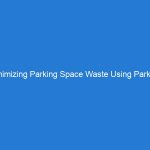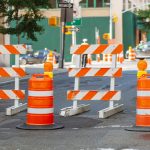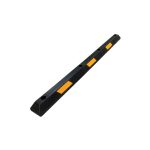Improved Safety
Reduces Speeding
Speeding is a major concern in residential areas, especially where children and pets are present. Installing speed bumps is an effective way to reduce speeding and make the neighborhood safer. Speed bumps force drivers to slow down and pay attention to their surroundings. This not only reduces the risk of accidents but also helps to prevent noise pollution caused by speeding vehicles. By slowing down traffic, speed bumps create a more peaceful and pleasant living environment for residents. Additionally, they can discourage cut-through traffic, making the area less congested and more enjoyable for everyone.
Prevents Accidents
Speed bumps are an effective way to prevent accidents in residential areas. By forcing drivers to slow down, speed bumps reduce the risk of collisions between vehicles and pedestrians or other objects. This is especially important in areas where children are present, such as near schools or playgrounds. Speed bumps also help to prevent accidents caused by reckless driving or speeding, which can be a major problem in some neighborhoods. Overall, installing speed bumps is a simple and cost-effective way to improve safety in residential areas and prevent accidents from occurring.
Protects Pedestrians and Cyclists
Speed bumps are an effective way to protect pedestrians and cyclists in residential areas. By slowing down drivers, speed bumps reduce the risk of accidents and injuries. Pedestrians and cyclists can feel safer crossing the street or riding their bikes when drivers are forced to slow down. Additionally, speed bumps can help prevent reckless driving and discourage drivers from using residential streets as shortcuts. This creates a safer environment for everyone in the community, especially children who may be playing outside. Overall, installing speed bumps is a simple yet effective way to protect the most vulnerable members of your community.
Traffic Calming
Encourages Safe Driving
Speed bumps are an effective way to encourage safe driving in residential areas. By slowing down drivers, speed bumps reduce the risk of accidents and increase the safety of pedestrians, cyclists, and other road users. They also encourage drivers to be more aware of their surroundings and to drive more cautiously, which can help to prevent collisions and other accidents. Additionally, speed bumps can help to reduce noise pollution and improve the overall quality of life in residential areas by discouraging excessive speeding and reckless driving. Overall, installing speed bumps is a simple and effective way to promote safe driving and create a safer, more pleasant environment for everyone in your community.
Reduces Noise Pollution
Speed bumps not only help in reducing the speed of vehicles but also contribute to reducing noise pollution in residential areas. Vehicles that speed through residential areas can create a lot of noise, which can be disturbing for residents. By installing speed bumps, the speed of vehicles is reduced, which in turn reduces the noise created by them. This can lead to a more peaceful and quiet environment for residents, making it easier for them to sleep, work, and relax without any disturbance. Additionally, reduced noise pollution can also have a positive impact on the mental and physical health of residents, making it a win-win situation for everyone.
Improves Air Quality
Speed bumps can also contribute to improving air quality in residential areas. By slowing down vehicles, speed bumps reduce the amount of emissions released into the air. This is especially important in areas with high traffic volume, where vehicles are constantly accelerating and decelerating. Additionally, speed bumps can encourage drivers to take alternative routes or use public transportation, further reducing the number of vehicles on the road. By improving air quality, speed bumps can help create a healthier and more sustainable living environment for residents.
Cost-Effective
Low Installation Costs
One of the major advantages of installing speed bumps in your residential area is their low installation costs. Unlike other traffic calming measures, such as roundabouts or traffic circles, speed bumps are relatively inexpensive to install. They can be made from a variety of materials, including concrete, asphalt, or rubber, and can be easily installed by a professional contractor. This means that even if you have a limited budget, you can still improve the safety of your neighborhood by installing speed bumps. Additionally, because speed bumps are low maintenance, you won’t have to worry about incurring additional costs for upkeep or repairs.
Minimal Maintenance Required
One of the biggest advantages of installing speed bumps in your residential area is that they require minimal maintenance. Unlike other traffic calming measures, such as roundabouts or chicanes, speed bumps are relatively simple structures that don’t require much upkeep. They’re made from durable materials like asphalt or concrete, which means they can withstand heavy traffic and harsh weather conditions without deteriorating. Additionally, speed bumps don’t have any moving parts or electrical components that can break down or malfunction over time. This means that once they’re installed, you can expect them to last for many years with little to no maintenance required.
Long-Lasting Solution
Speed bumps are a long-lasting solution for controlling speed in residential areas. Unlike other traffic calming measures, such as signs or speed limits, speed bumps physically force drivers to slow down. They are made of durable materials, such as concrete or asphalt, and can withstand heavy traffic and harsh weather conditions. Once installed, speed bumps require minimal maintenance and can last for years. This makes them a cost-effective solution for communities looking to improve safety on their streets. Additionally, speed bumps can be easily removed or relocated if necessary, making them a flexible option for neighborhoods that may need to adjust their traffic calming strategies over time.
Enhanced Property Value
Attracts Homebuyers
Attracts Homebuyers: Homebuyers are always looking for a safe and secure neighborhood to live in. Installing speed bumps in your residential area can help attract potential homebuyers by demonstrating that the community is committed to ensuring the safety of its residents. The presence of speed bumps can also indicate that the area is family-friendly and encourages a slower pace of life. This can be particularly appealing to families with young children or elderly residents who may be more vulnerable to accidents caused by speeding vehicles. By investing in speed bumps, you can help increase the value of your property and make it a more desirable place to live.
Increases Property Value
Installing speed bumps in your residential area can also increase the value of your property. This is because speed bumps can help create a safer and more peaceful environment for residents, which is a desirable feature for potential homebuyers. Additionally, speed bumps can also help reduce noise pollution and traffic congestion, which can further enhance the appeal of your neighborhood. By investing in speed bumps, you are not only improving the safety and quality of life for your community, but you are also making a smart investment in your property’s value.
Improves Neighborhood Aesthetics
In addition to enhancing safety and reducing speeding, installing speed bumps can also improve the overall aesthetics of your neighborhood. Speed bumps can be designed to blend in with the surrounding environment, using materials and colors that complement the existing landscape. This can help to create a more cohesive and visually appealing community. Additionally, speed bumps can be used to create designated pedestrian walkways, further enhancing the appearance and functionality of your neighborhood. By investing in speed bumps, you can not only improve safety but also enhance the overall look and feel of your residential area.
Customizable Design
Various Shapes and Sizes Available
When it comes to speed bumps, there are various shapes and sizes available to suit different needs. The most common shapes are the traditional rounded bump and the flat-top bump. The rounded bump is designed to slow down vehicles to a complete stop, while the flat-top bump is designed to slow down vehicles without causing discomfort to passengers. Additionally, there are also speed humps, which are longer and flatter than traditional speed bumps, and are designed to slow down vehicles over a longer distance. The size of the speed bump will depend on the speed limit of the area and the intended purpose of the bump. It’s important to choose the right shape and size of speed bump to ensure maximum effectiveness in slowing down vehicles and improving safety in your residential area.
Can Be Painted to Match Surroundings
One of the major concerns people have when it comes to installing speed bumps is that they may not blend in with the surroundings and look unsightly. However, this is not the case as speed bumps can be painted to match the surroundings. This means that they can be painted in the same color as the road or the surrounding buildings, making them less noticeable and more aesthetically pleasing. This is particularly important in residential areas where people want their surroundings to look neat and tidy. By painting speed bumps to match the surroundings, they can blend in seamlessly and not detract from the overall appearance of the area.
Can Be Installed in Specific Locations
Speed bumps can be installed in specific locations to target areas where speeding is a common problem. For example, they can be placed near schools, parks, or residential areas where children frequently play. Additionally, they can be installed in areas where there are blind spots or sharp turns that can increase the risk of accidents. By strategically placing speed bumps in these locations, drivers are forced to slow down and pay closer attention to their surroundings, ultimately making the area safer for everyone.









